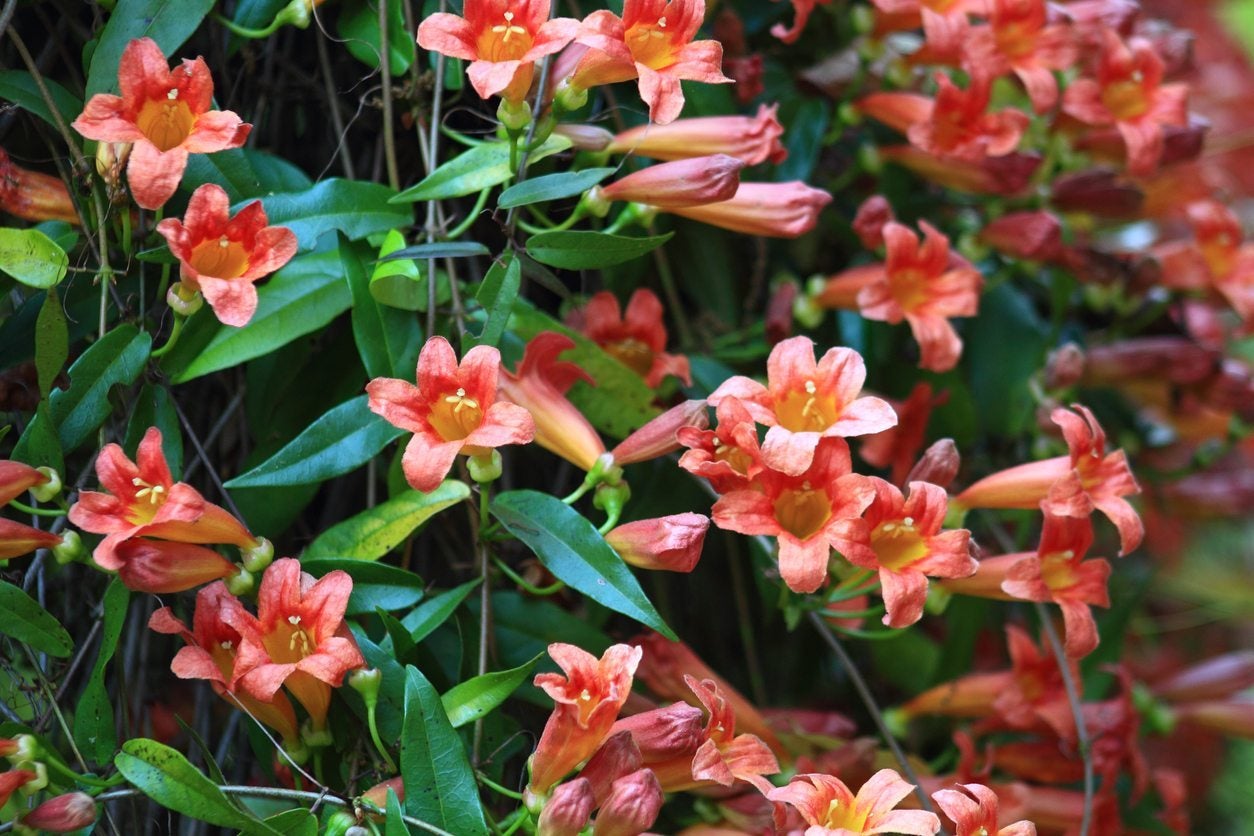Zone 9 Vine Varieties: Common Vines That Grow In Zone 9

Vines have many uses in the garden, including filling narrow spaces, covering arches to provide shade, forming living privacy walls, and climbing up the sides of a house. Many have ornamental flowers and leaves, and some feed pollinators and wildlife with their nectar, fruits, and seeds. Since vines grow vertically, even those gardening in small spaces can fit in a vine or two. If you live in zone 9, you may have wondered what vine varieties are good choices for your garden.
Growing Vines in Zone 9
Zone 9 gardeners are lucky – vines for zone 9 include both temperate species like Clematis terniflora that can tolerate summer heat and subtropical species like Aristolochia elegans that can cope with a few chilly months. In addition to common vines that grow in zone 9, like the familiar English ivy and Virginia creeper, there are many unique zone 9 vine varieties you can try. Many of these vines offer interesting leaf and flower shapes, fragrances, and a multitude of colors that will move your vertical garden beyond the ordinary.
Vines for Zone 9
Black eyed Susan vine (Thunbergia alata) originated in eastern Africa and offers a splash of color along with attractive leaves. Its flowers are most commonly yellow with black centers, but orange, pink, and white varieties are also available. In addition to this vine’s uses as a climbing plant, it is beautiful as a groundcover or cascading from containers. Be careful, though: Thunbergia grows rapidly in warm climates, and pruning is required to control its spread. Calico vine (Aristolochia elegans) contributes a tropical look with its large purple flowers and broad, heart-shaped leaves. The leaves are evergreen, and the flowers stay on the plant all summer. All parts of the plant are toxic. Coral vine (Antigonon leptopus), like calico vine, grows in zone 9b as a woody vine and in 9a as an herbaceous perennial. Its long-lasting red, pink, or white flowers are great for attracting bees. Butterfly vine (Callaeum macroptera) is a fast-growing climber that can cover a large area and quickly provide shade. Its black marked yellow flowers and unusual, butterfly-shaped fruit both make great additions to flower arrangements. Crossvine (Bignonia capreolata) is a woody perennial vine with evergreen leaves. This plant is native to central and eastern regions of the United States and was used among the Cherokee to make a medicinal beverage. It produces tube shaped, multicolored flowers in shades of yellow, pink, orange, or tangerine. A very adaptable plant, crossvine tolerates the heat and poor drainage found in many zone 9 gardens in Florida.
Sign up for the Gardening Know How newsletter today and receive a free copy of our e-book "How to Grow Delicious Tomatoes".
Ilana Goldowitz Jimenez is a scientific and agricultural writer with a B.S. in Plant Sciences from Cornell University and a PhD in Chemical Biology and Infectious Disease from Harvard University.